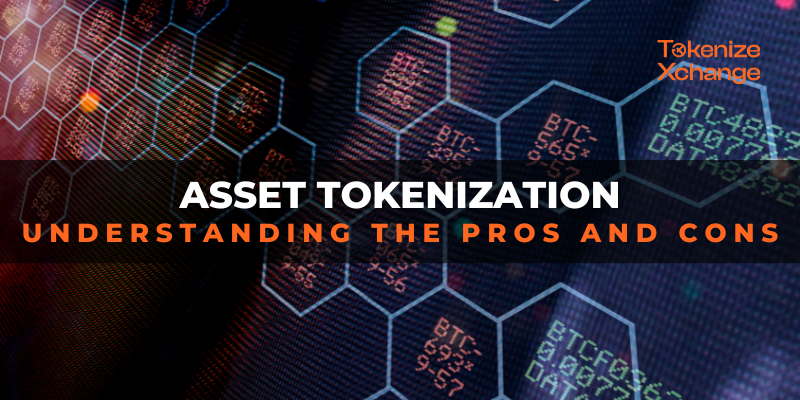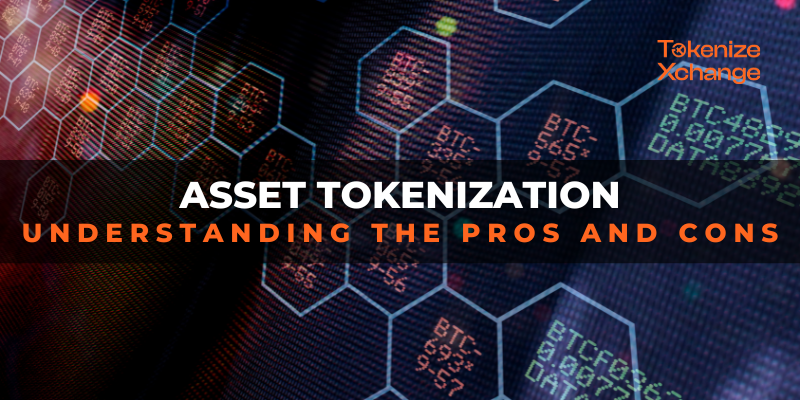
In recent years, the concept of asset tokenization has garnered significant popularity as a revolutionary solution that holds the potential to transform traditional finance and investment practices. Leveraging on blockchain technology, asset tokenization allows for real world assets to be represented as tokens, allowing for greater liquidity, accessibility and efficiency in the financial landscape.
Asset tokenization on the blockchain presents many exciting opportunities as well potential challenges. Before engaging with this process, it is crucial to have a comprehensive understanding on the pros and the cons of this emerging technology.
Pros of Asset Tokenization
- Enhanced Accessibility and Liquidity: Asset tokenization allows fractional ownership, enabling investors with limited capital to participate in high-value markets. It breaks down assets into smaller, tradable units, providing greater accessibility and liquidity in traditionally illiquid markets like real estate and art. Investors can easily diversify their portfolios and access new investment opportunities globally.
- Increased Transparency: Tokenized assets on the blockchain offer enhanced transparency. All transactions are recorded on a public ledger, visible and accessible to all participants. The entire history of an asset, including its origin and ownership transfers, can be traced and verified. This transparency reduces the risk of fraudulent activities, instilling confidence in investors.
- Improved Market Efficiency: Asset tokenization leverages smart contracts, automating various processes like ownership transfers and dividend distributions. This reduces the need for intermediaries, streamlining operations, and improving market efficiency. Faster settlement times and lower transaction costs benefit all participants in the ecosystem.
- Fractional Ownership: Tokenization enables fractional ownership, meaning investors can own a portion of high-value assets rather than purchasing them entirely. This democratizes access to valuable assets, making investment opportunities available to a broader range of people.
- Diversification Opportunities: With tokenized assets spanning various industries and asset classes, investors can diversify their portfolios more easily. This helps spread risk and potential returns across a wide range of assets, contributing to more balanced investment strategies.
Cons of Asset Tokenization
- Security Risks: While blockchain technology itself is secure, the platforms and smart contracts used for asset tokenization can still be vulnerable to hacking and security breaches. Any compromise in security can lead to significant financial losses and damage to the reputation of the tokenized asset.
- Lack of Standardization: The lack of uniform standards across various blockchain platforms can create interoperability challenges. Assets tokenized on one platform may not be easily tradable or transferable on another, limiting the seamless movement of assets between different ecosystems.
- Governance and Dispute Resolution: Tokenized assets may face challenges related to governance and dispute resolution mechanisms. The decentralized nature of blockchain can make resolving disputes and making collective decisions more challenging compared to traditional centralized systems.
- Market Manipulation: Tokenized assets, particularly in new markets, may be susceptible to market manipulation and price manipulation due to lower liquidity and limited regulatory oversight.
- Overvaluation and Speculative Behavior: The tokenization of assets, especially in emerging markets, can sometimes lead to overvaluation and speculative behavior driven by hype and market sentiment rather than underlying asset value. This can create risks of market bubbles and sudden price fluctuations.
